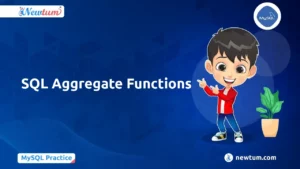If you’ve ever come across a nested list and needed to transform it into a single flat list, you’re in the right place. In this blog, we will explore an efficient and elegant approach to flatten a nested List in Python using list comprehension. Nested lists are commonly encountered when working with data structures or while dealing with certain algorithms. The process of flattening a nested list involves extracting all the individual elements from the sublists and creating a single-level list. This can be a common task in data manipulation or when preparing data for further analysis.
In this blog, we will focus on leveraging the simplicity and versatility of list comprehension to achieve the desired result. By the end of this blog post, you will have a solid understanding of how to use list comprehension to flatten a nested list and have a clear step-by-step explanation of the code involved.
So, let’s dive into the world of list comprehension and learn a Python program to flatten a nested List using a list comprehension.
Python Program to Flatten a Nested List Using a List Comprehension
#Flatten a Nested List in python Using a list comprehension method
my_list = [[1], [2, 6], [4, 5, 6, 7]]
# Each element num is stored in flat_list
flat_list = [num for sublist in my_list for num in sublist]
#output
print('Flat List =',flat_list)
Program Code Explanation
- Initialising the nested list
We start by initialising a nested list called my_list containing several sublists.
- Flattening the Nested List
To flatten the nested list, we use a list comprehension. The list comprehension iterates over each sublist in my_list and assigns it to the variable sublist. Within the same comprehension, we iterate over each element num in sublist. This nested iteration allows us to access each individual element of the nested list.
- Storing Elements in a Flat List
Inside the list comprehension, each element num is stored in the flat_list. The final result is a flattened list that contains all the elements from the nested list.
- Displaying the Flattened List
We use the print statement to display the flattened list. The output is printed as “Flat List = [element1, element2, …]”.
Output:
The output of the code is the flattened list. In this case, the output is:
Flat List = [1, 2, 6, 4, 5, 6, 7]
The program takes a nested list my_list as input, which contains three sublists: [1], [2, 6], and [4, 5, 6, 7]. Using list comprehension, the program iterates over each sublist and assigns it to the variable sublist. Within the same comprehension, it further iterates over each element num in sublist. This allows access to each individual element of the nested list. During the iteration, the program appends each num to the flat_list. As a result, the flat_list will contain all the elements from the nested list in a flattened structure.
Finally, the program prints the contents of the flat_list, which is [1, 2, 6, 4, 5, 6, 7].
Other Methods to Flatten a Nested List in Python
Apart from using list comprehension, other methods are:
Recursive Function: The function would iterate through each element of the input list and check if it is a sublist. If it is a sublist, the function would recursively call itself to flatten the sublist. This process continues until all sublists are flattened. It could be slower for large nested lists due to the overhead of recursive function calls.
Nested Loops: We can iterate over each sublist and element in the nested list. By appending each element to a new flat list, we achieve the desired flattened list. This method is straightforward and suitable for simple nested lists. However, it requires more lines of code compared to list comprehension, making it less concise and readable.
While the recursive and nested loop methods are valid alternatives, using list comprehension to flatten a nested list offers a concise and expressive syntax, reducing the number of lines of code required to achieve the same result. It allows you to write the flattening logic in a single line, enhancing code readability and maintainability. List comprehension is a widely used and recognized Python construct. Many Python developers are familiar with this approach, making the code more understandable and easier to collaborate on.
In this tutorial, we have explored how to flatten a nested list in Python using list comprehension. The code provided allows us to efficiently convert a nested list into a flat list by iterating over the sublists and their elements. By understanding this technique, you can effectively manipulate and extract data from nested structures in Python.
However, it’s worth noting that alternative approaches, such as recursion or nested loops, can also be used to achieve the same result. It is always recommended to choose the approach that best suits your specific requirements and coding style. With the ability to flatten nested lists, you can streamline your data processing tasks and enhance the readability and efficiency of your Python code.
FAQ Based on Flatten a Nested List Using a List Comprehension in Python
Yes, list comprehension can handle lists containing objects of different data types. The elements within the nested structure can be of any data type, including integers, strings, floats, or even custom objects.
List comprehension can handle irregular or jagged nested lists without any additional modifications. It will automatically iterate over the elements, regardless of the varying lengths of the sublists, and flatten them into a single list.
Flattening a nested list can be beneficial in various scenarios, such as:
* Processing hierarchical data in databases or file systems.
* Parsing XML or JSON responses from web APIs.
* Analyzing nested data structures in machine learning or data mining tasks.
* Working with nested dictionaries or JSON objects in web development.
Yes, list comprehension allows you to flatten multiple levels of nesting. By nesting additional for loops within the list comprehension, you can access elements at deeper levels of the nested structure and flatten them into a single list.
While list comprehension is a powerful and concise approach for flattening a nested list, it may not be suitable for extremely large or deeply nested structures. In such cases, using recursion or alternative approaches can be more memory-efficient and practical.



